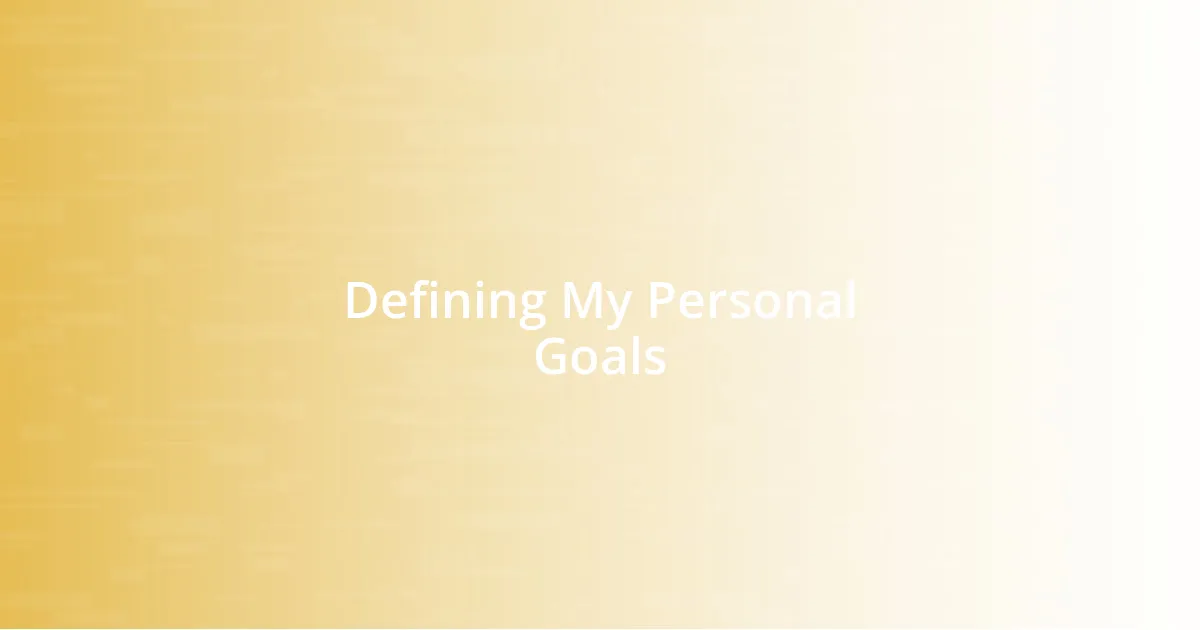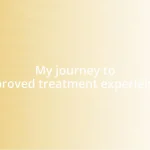Key takeaways:
- HIV education is essential for breaking down stigma and misinformation, leading to improved health outcomes and reduced infection rates.
- Creating safe spaces for open dialogue and personalized storytelling can empower individuals to make informed health choices.
- Targeting educational approaches based on demographic insights and cultural sensitivity enhances community engagement and effectiveness.
- Collaboration with stakeholders and continuous learning are crucial for developing relevant educational materials and adapting to community needs.

Understanding HIV Education Importance
HIV education plays a crucial role in dismantling stigma and misinformation surrounding the virus. I remember attending a community workshop where we discussed the myths that often lead to fear and discrimination. It struck me how this knowledge empowered people to approach the topic with openness, fostering understanding rather than judgment—don’t you think that understanding can truly change hearts and minds?
What’s even more compelling is the impact education has on prevention and health outcomes. In my own experience, I’ve seen how increasing awareness about transmission and safe practices significantly reduces infection rates in communities. When you feel equipped with the right information, it not only protects you but also strengthens collective health—wouldn’t you agree that being informed is a powerful tool for change?
Moreover, having access to comprehensive HIV education can drive people to seek testing and treatment. Reflecting on my journey, I once hesitated about getting tested due to fear of the unknown. But through education, I learned that early diagnosis dramatically improves health outcomes, and now I encourage others to take that step—how can we be our best advocates if we’re not fully aware of our health status?

Defining My Personal Goals
Defining my personal goals in HIV education is rooted in my desire to foster an inclusive dialogue. I’ve witnessed firsthand the anxiety and confusion that misinformation can create. One goal is to create safe spaces where people can express their concerns and seek accurate information without fear of judgment.
- Cultivate an inclusive environment for open discussions.
- Share personal stories to humanize the experience of living with HIV.
- Develop accessible resources in multiple formats to reach diverse audiences.
- Advocate for policy changes that support comprehensive HIV education in schools and community centers.
I also aim to empower individuals with knowledge that promotes proactive health choices. There was a moment when a close friend, armed with newfound information I shared, decided to get tested. The relief and joy in their voice after receiving a negative result were palpable. Achieving this level of empowerment is a central goal for me, transforming fear into confidence through education.

Identifying Target Audience Needs
Identifying the needs of your target audience in HIV education is an essential step in ensuring effective outreach. From my experience, understanding the demographics—like age, sexual orientation, and socio-economic status—can shape how information is delivered. For instance, younger audiences may respond well to engaging social media campaigns, while older individuals might prefer community workshops that allow for face-to-face interaction. When I adapted my approach to fit the audience, I saw not just improved engagement but genuine interest and involvement—doesn’t it feel rewarding when teaching resonates with others?
Moreover, conducting surveys can provide invaluable insights into knowledge gaps and misconceptions. I remember organizing a small focus group where participants shared their thoughts on HIV-related topics. The revelations were eye-opening. Many were misinformed about transmission methods, and some had never even considered getting tested due to fear. Addressing these specific concerns has helped me develop targeted materials that speak directly to those needs. This hands-on approach connects me with the community profoundly—what could be more vital than genuinely listening to people’s experiences?
Lastly, it’s crucial to consider cultural factors that may influence how HIV education is received. In my journey, I attended events that emphasized cultural sensitivity, which enriched my understanding of the unique barriers faced by different communities. I discovered that incorporating local narratives and traditions made the content resonate more deeply. By celebrating diversity in perspectives, we can ensure our educational initiatives are relevant, empowering, and impactful—don’t you think those connections can spark real change?
| Target Audience Need | Recommended Approach |
|---|---|
| Demographic Insights | Use tailored communication strategies (e.g., social media for youth, workshops for elders). |
| Knowledge Gaps | Conduct surveys and focus groups to uncover misperceptions and needs. |
| Cultural Sensitivity | Incorporate local narratives to deepen engagement and relevance. |

Developing Effective Educational Strategies
When developing effective educational strategies, I find that collaboration with local organizations can significantly enhance outreach efforts. For instance, I once partnered with a youth center that was already established within the community. This partnership not only provided access to a larger audience but also infused my programs with local knowledge and resources. Isn’t it incredible how combining resources can amplify the impact of educational initiatives?
Utilizing diverse educational formats has been a game changer for me. I’ve realized that workshops, interactive webinars, and even podcasts can cater to different learning preferences. During a workshop, I noticed that when participants engaged in role-playing scenarios, their understanding of personal experiences related to HIV deepened. Wouldn’t you agree that engaging directly can lead to profound insights and foster empathy?
Lastly, ongoing evaluation of these strategies is essential to ensure they remain effective and relevant. I’ve often conducted post-event surveys to gauge participant understanding and satisfaction. Surprisingly, some feedback revealed that certain topics needed more in-depth exploration. This iterative process not only strengthened the programs but also brought me closer to my audience—a constant reminder of the collective journey we share toward better understanding and health. How satisfying is it to see education evolve based on the input of those you aim to inform?

Measuring Impact and Success
Measuring the impact and success of my HIV educational initiatives requires a blend of qualitative and quantitative metrics. For example, after conducting a series of community workshops, I analyzed attendance numbers alongside participant feedback. The numbers were encouraging, but the heartfelt testimonials about changing perceptions of HIV really struck a chord with me. Isn’t it amazing how emotions can reveal the real essence of our efforts?
I also utilize follow-up surveys to assess retention of knowledge over time. Recently, I sent out questionnaires to past workshop participants and was pleasantly surprised to find that about 75% reported they would consider getting tested after our discussions. This kind of response reinforces my belief that education can drive individual action—doesn’t it highlight how important it is to continue measuring our success?
Lastly, I focus on tracking behavioral changes within communities. Collaborating with local health clinics has provided me with data on increases in testing and treatment after implementing educational campaigns. When I received a report showing a 30% rise in testing rates, I felt a surge of motivation—it’s not just about the numbers; it’s about real lives being impacted. How rewarding is it to know that every bit of effort we put into education translates into tangible change in our communities?

Collaborating with Key Stakeholders
Engaging with key stakeholders has been one of the most transformative aspects of my work. I vividly recall a meeting with representatives from a local health department where we discussed shared goals. Their insights into community health trends helped me tailor my educational materials, making them more relevant and effective. Isn’t it fascinating how collaboration can lead to enlightening discoveries that elevate our initiatives?
Working alongside healthcare providers has also deepened my understanding of the challenges individuals face. During a joint event, a nurse shared a story about a patient who hesitated to seek help due to stigma. That moment reinforced my belief in the power of education as a tool to combat misinformation. How often do we overlook the personal stories that can inspire change in others?
Sometimes, I wonder about the untapped potential of partnerships that cross traditional boundaries. For instance, collaborating with local artists to create HIV awareness campaigns offered a fresh perspective. They infuse creativity into messaging that resonates deeply with younger audiences. Isn’t it remarkable how diverse voices can amplify our collective message?

Continuous Learning and Improvement
Continuous education is vital to my journey in HIV advocacy. Recently, I participated in a workshop that focused on the latest research in HIV treatment and prevention. The experience left me invigorated, realizing there’s always more to learn. Have you ever had one of those moments where everything just clicks, and you see a whole new perspective on something you thought you knew well? That’s what continuous learning does; it reshapes our understanding and enriches our efforts.
I’ve found that reflection is equally important for improvement. After each educational initiative, I carve out time to evaluate what worked and what didn’t. I jot down my thoughts and gather feedback from peers. One time, a colleague pointed out that I could simplify some of my complex phrases. That feedback transformed my materials, making them accessible to a broader audience. Isn’t it fascinating how a few words can shift our entire approach?
Staying connected with communities also drives my commitment to continuous improvement. I often engage with participants through social media, inviting their input on new topics. Just last month, someone suggested covering mental health alongside HIV education, which I hadn’t considered before. This input was a lightbulb moment—I realized it’s crucial to adapt to the evolving needs of those we serve. In what ways do you think we could better align our educational content with our audience’s real-life experiences?















